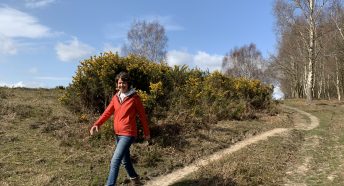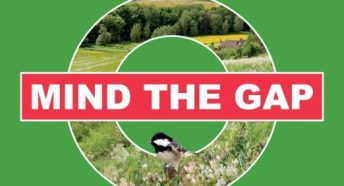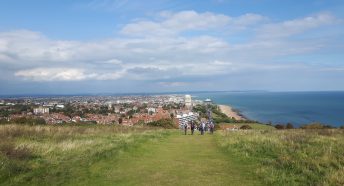Tell your MP and local council to keep green gaps
The countryside next door has been of vital importance for our health and wellbeing since the start of the coronavirus pandemic.
Green gaps between towns and villages provide the countryside next door to us. These gaps are threatened by development, decreasing their ability to provide for nature; to reduce the impacts of climate change; and to offer people access to green spaces.
In Sussex there’s a real problem of villages and towns joining up especially along the coast and in Mid Sussex. The Burgess Hill Northern Arc development and Chatsmore Farm in the Ferring/Goring gap are of concern. Protecting green gaps between settlements and green spaces from development has never been more important. Even the protected landscapes of the High Weald and Chichester Harbour Areas of Outstanding Natural Beauty and the South Downs National Park are seeing more building between settlements.
The green gaps between towns and villages in Sussex are not designated Green Belt land, but the findings in CPRE’s State of the Green Belt 2021 report ring true for our green gaps. The report shows that the current and future threat of housing development faced by Green Belt land in England continues to be unprecedented. We are likely to see this number increase in the future, as the government’s proposed method for calculating housing need will put extreme pressure on Green Belt land. It shows that the majority of developments in the Green Belt are on greenfield sites and are land-hungry, not providing the affordable homes we need to face the housing crisis.
The recommendations in the report are relevant to green gaps in Sussex. CPRE recommends that to enable Green Belt to continue to fulfil its function, while allowing for the provision of new homes. that the government:
– reintroduces the use of effective strategic city regional planning into planning law through the upcoming Planning Bill
– ensures the Strategic Environmental Assessments process is not weakened, so their ability to identify more sustainable or less harmful alternative to Green Belt release is maintained
– introduces a clear ‘brownfield first’ or ‘renew zone first’ policy in the Planning Bill, which ensures that suitable previously developed land can be prioritised for redevelopment over any greenfield Green Belt sites, as well as taking a more proactive approach to identifying new brownfield sites
We need to ensure that there are significant green gaps between settlements in Sussex. We applaud councils like Adur DC and others who are buying up green spaces to stop development encroaching between Shoreham and Lancing followed by recent land purchases by Worthing Council.
Why not write to your MP and your local planning department and tell them how much you value green gaps between our towns and villages?
Read: CPRE – Countryside Next Door: State of the Green Belt 2021





